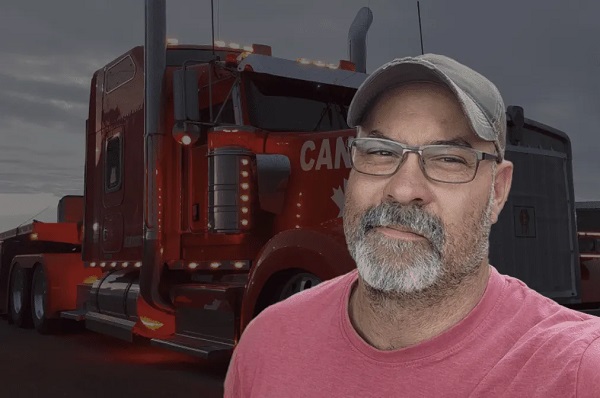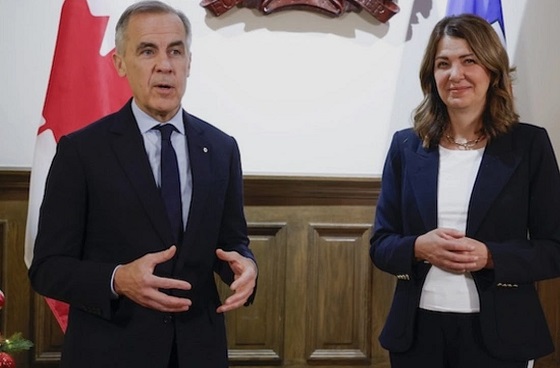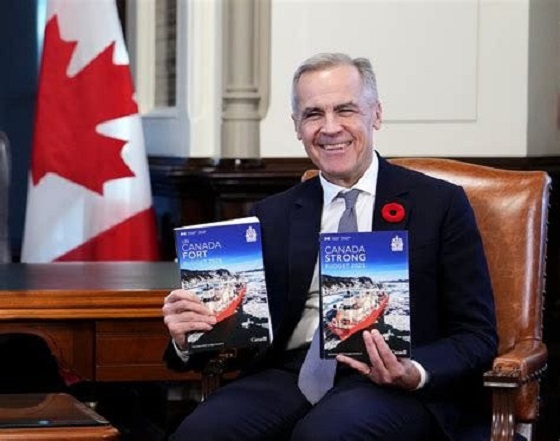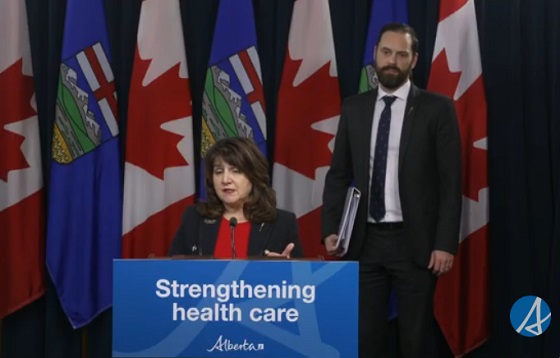Alberta
COASTAL GASLINK PIPELINE PROJECT SETS NEW STANDARD WITH UNPRECEDENTED INDIGENOUS SUPPORT AND PARTICIPATION

COASTAL GASLINK PIPELINE PROJECT SETS NEW STANDARD WITH UNPRECEDENTED INDIGENOUS SUPPORT AND PARTICIPATION
Coastal GasLink (CGL) is a 670-kilometre pipeline that will deliver natural gas from northeastern British Columbia to LNG Canada’s export terminal in Kitimat, B.C. As part of Coastal GasLink’s commitment to ensuring Indigenous and local communities are able to fully benefit from the construction and operation of the pipeline, we successfully negotiated 20 project and community agreements that clearly demonstrate our commitment to their communities for the long-term.
The Coastal GasLink Pipeline Project has set a new standard for Indigenous engagement and participation in critical energy infrastructure project development and construction. Since the project was first announced in 2012, thousands of hours have gone into listening and collaborating with Indigenous and local communities to create a project that is delivering on environmental and cultural protection, including $1-billion in long-term economic benefits through jobs and contracting opportunities.
“Integrity, collaboration and respect are at the heart of Coastal GasLink’s commitment to creating lasting opportunities for Indigenous communities in northern British Columbia and we’re proud of the relationships we’ve built,” said Tiffany Murray, Coastal GasLink’s director of Indigenous Relations.
“There is unprecedented support for this pipeline project from Indigenous and local communities, including agreements with the 20 elected First Nations along the right of way. Our engagement started at the early conceptual phase and continues today,” added Murray. “We are committed to engaging and working collaboratively on the project as it moves through construction and into operations.”
Coastal GasLink is a 670-kilometre pipeline that will safely deliver natural gas from northeastern B.C. to the LNG Canada liquefaction facility in Kitimat, B.C., connecting clean, sustainability produced Canadian energy to the world and ultimately, playing a critical role in the reduction of global greenhouse gas emissions and air pollution in Asia.
Construction launched in early 2019 following more than six years of rigorous review and environmental assessment. From the beginning, the project team focused on building relationships based on mutual trust and respect by providing meaningful opportunities for participation in project planning and jobs and local contracting prospects for Indigenous and local businesses and their communities.

Photo provided courtesy of TC Energy. Coastal GasLink implemented a Construction Monitoring and Community Liaison Program (CMCL). It provides opportunities for Indigenous members to participate in construction within their traditional territory for the purposes of observing, recording and reporting on implementation of construction activities to their communities.
A milestone moment was marked in June 2018 when leadership from a number of Indigenous groups and Coastal GasLink celebrated the announcement of the commitment for $620 million in contract awards to northern British Columbia Indigenous businesses for the project’s right- of-way clearing, medical, security and workforce accommodations. To date, Coastal GasLink has exceeded its commitments and awarded approximately $720 million in contracts to Indigenous and local businesses.
More than one-third of the field work completed on the project was conducted by Indigenous people and traditional knowledge was considered in its planning and design. The project continues to prioritize Indigenous and local hiring and held 25 Economic Summits along the route in 2018 and 2019 to connect interested job seekers and businesses with potential opportunities. Additionally, a variety of training programs continue to support Indigenous and local trainees and students. To protect Indigenous culture and values along with the environment during project construction, a Construction Monitoring and Community Liaison Program (CMCL) has been launched. The program provides opportunities for Indigenous community members to participate in construction within their traditional territory for the purposes of observing, recording and reporting on implementation of construction activities to their communities. It will continue through construction of the pipeline, which is planned for in-service in 2023.

Photo provided courtesy of TC Energy. Skills training and education is an essential part of Coastal GasLink’s committee to creating an extraordinary legacy. TC Energy invests in skills development and long-term education programs to support Indigenous and local residents and trainees.
Transparency is core to the CMCL program with Indigenous communities by meaningfully participating in the project to monitor the work that is being done. That open, relationship-based approach is something that Coastal GasLink believes is integral to the success of the projec
Harry Bodewitz, a program coordinator who is working closely with CMCL advisors from several Indigenous communities along the project corridor, has seen the value of the program. As construction ramps up, additional CMCL advisors will be brought on to be involved in the program.
“Something might have been planned initially, but once we actually get to the field, that plan may change, or get modified, to make sure it’s done right,” said Bodewitz. “In the CMCL Program, we have an opportunity to observe what’s going on, discuss it and share that with our communities.”
For Mike Gouchie, a CMCL coordinator from Lheidli T’enneh First Nation, the program provides a chance to be out in the field to make sure what matters to his community and neighbouring community CMCL advisors, is at the forefront of the construction program.
“As a CMCL coordinator, I’m able to assist the CMCL advisors to be out in the field with inspectors, construction management and myself to visit sites of interest, to understand the scope of the project in our territories and make sure environmental issues are identified,” he said.
Whether it’s in the field or at the table with First Nation leaders for monthly meetings, Coastal GasLink has involved Indigenous communities every step of the way.

Photo provided courtesy of TC Energy. Coastal GasLink is delivering significant economic benefits to British Columbian families today and for decades to come.
“I’m proud of the relationships we have built and the work we’ve done on this project,” said Murray.
“We believe that by building meaningful, long-term relationships based on trust and integrating feedback into our project, we will create an extraordinary legacy of safety and respect for communities and the environment.”
Background: The Canadian Energy Compendium is an annual Energy Council of Canada initiative which provides opportunity for cross-sectoral collaboration on a topic of shared interest across the Canadian energy sector, produced with the support of Canada’s national energy associations and Energy Council of Canada’s members. The stories contributed to the 2019 edition, Indigenous Energy Across Canada, highlight current conversations celebrating Canada’s dynamic energy sector and encouraging its continuous improvement.
Thanks to Todayville for helping us bring our members’ stories of collaboration and innovation to the public.
Click to read a Foreward from JP Gladu, Chief Development and Relations Officer, Steel River Group; Former President & CEO, Canadian Council for Aboriginal Business

JP Gladu, Chief Development and Relations Officer, Steel
River Group; Former President & CEO, Canadian Council for Aboriginal Business

Jacob Irving, President of Energy Council of Canada
The Canadian Energy Compendium is an annual initiative by the Energy Council of Canada to provide an opportunity for cross-sectoral collaboration and discussion on current topics in Canada’s energy sector. The 2020 Canadian Energy Compendium: Innovations in Energy Efficiency is due to be released November 2020.
Click to read comments about this series from Jacob Irving, President of the Energy Council of Canada.
Alberta
Alberta can’t fix its deficits with oil money: Lennie Kaplan

This article supplied by Troy Media.
Alberta is banking on oil to erase rising deficits, but the province’s budget can’t hold without major fiscal changes
Alberta is heading for a fiscal cliff, and no amount of oil revenue will save it this time.
The province is facing ballooning deficits, rising debt and an addiction to resource revenues that rise and fall with global markets. As Budget 2026 consultations begin, the government is gambling on oil prices to balance the books again. That gamble is failing. Alberta is already staring down multibillion-dollar shortfalls.
I estimate the province will run deficits of $7.7 billion in 2025-26, $8.8 billion in 2026-27 and $7.5 billion in 2027-28. If nothing changes, debt will climb from $85.2 billion to $112.3 billion in just three years. That is an increase of more than $27 billion, and it is entirely avoidable.
These numbers come from my latest fiscal analysis, completed at the end of October. I used conservative assumptions: oil prices at US$62 to US$67 per barrel over the next three years. Expenses are expected to keep growing faster than inflation and population. I also requested Alberta’s five-year internal fiscal projections through access to information but Treasury Board and Finance refused to release them. Those forecasts exist, but Albertans have not been allowed to see them.
Alberta has been running structural deficits for years, even during boom times. That is because it spends more than it brings in, counting on oil royalties to fill the gap. No other province leans this hard on non-renewable resource revenue. It is volatile. It is risky. And it is getting worse.
That is what makes Premier Danielle Smith’s recent Financial Post column so striking. She effectively admitted that any path to a balanced budget depends on doubling Alberta’s oil production by 2035. That is not a plan. It is a fantasy. It relies on global markets, pipeline expansions and long-term forecasts that rarely hold. It puts taxpayers on the hook for a commodity cycle the province does not control.
I have long supported Alberta’s oil and gas industry. But I will call out any government that leans on inflated projections to justify bad fiscal choices.
Just three years ago, Alberta needed oil at US$70 to balance the budget. Now it needs US$74 in 2025-26, US$76.35 in 2026-27 and US$77.50 in 2027-28. That bar keeps rising. A single US$1 drop in the oil price will soon cost Alberta $750 million a year. By the end of the decade, that figure could reach $1 billion. That is not a cushion. It is a cliff edge.
Even if the government had pulled in $13 billion per year in oil revenue over the last four years, it still would have run deficits. The real problem is spending. Since 2021, operating spending, excluding COVID-19 relief, has jumped by $15.5 billion, or 31 per cent. That is nearly eight per cent per year. For comparison, during the last four years under premiers Ed Stelmach and Alison Redford, spending went up 6.9 per cent annually.
This is not a revenue problem. It is a spending problem, papered over with oil booms. Pretending Alberta can keep expanding health care, education and social services on the back of unpredictable oil money is reckless. Do we really want our schools and hospitals held hostage to oil prices and OPEC?
The solution was laid out decades ago. Oil royalties should be saved off the top, not dumped into general revenue. That is what Premier Peter Lougheed understood when he created the Alberta Heritage Savings Trust Fund in 1976. It is what Premier Ralph Klein did when he cut spending and paid down debt in the 1990s. Alberta used to treat oil as a bonus. Now it treats it as a crutch.
With debt climbing and deficits baked in, Alberta is out of time. I have previously laid out detailed solutions. But here is where the government should start.
First, transparency. Albertans deserve a full three-year fiscal update by the end of November. That includes real numbers on revenue, expenses, debt and deficits. The government must also reinstate the legal requirement for a mid-year economic and fiscal report. No more hiding the ball.
Second, a real plan. Not projections based on hope, but a balanced three-year budget that can survive oil prices dropping below forecast. That plan should be part of Budget 2026 consultations.
Third, long-term discipline. Alberta needs a fiscal sustainability framework, backed by a public long-term report released before year-end.
Because if this government will not take responsibility, the next oil shock will.
Lennie Kaplan is a former senior manager in the fiscal and economic policy division of Alberta’s Ministry of Treasury Board and Finance, where, among other duties, he examined best practices in fiscal frameworks, program reviews and savings strategies for non-renewable resource revenues. In 2012, he won a Corporate Values Award in TB&F for his work on Alberta’s fiscal framework review. In 2019, Mr. Kaplan served as executive director to the MacKinnon Panel on Alberta’s finances—a government-appointed panel tasked with reviewing Alberta’s spending and recommending reforms.
Alberta
IEA peak-oil reversal gives Alberta long-term leverage

This article supplied by Troy Media.
The peak-oil narrative has collapsed, and the IEA’s U-turn marks a major strategic win for Alberta
After years of confidently predicting that global oil demand was on the verge of collapsing, the International Energy Agency (IEA) has now reversed course—a stunning retreat that shatters the peak-oil narrative and rewrites the outlook for oil-producing regions such as Alberta.
For years, analysts warned that an oil glut was coming. Suddenly, the tide has turned. The Paris-based IEA, the world’s most influential energy forecasting body, is stepping back from its long-held view that peak oil demand is just around the corner.
The IEA reversal is a strategic boost for Alberta and a political complication for Ottawa, which now has to reconcile its climate commitments with a global outlook that no longer supports a rapid decline in fossil fuel use or the doomsday narrative Ottawa has relied on to advance its climate agenda.
Alberta’s economy remains tied to long-term global demand for reliable, conventional energy. The province produces roughly 80 per cent of Canada’s oil and depends on resource revenues to fund a significant share of its provincial budget. The sector also plays a central role in the national economy, supporting hundreds of thousands of jobs and contributing close to 10 per cent of Canada’s GDP when related industries are included.
That reality stands in sharp contrast to Ottawa. Prime Minister Mark Carney has long championed net-zero timelines, ESG frameworks and tighter climate policy, and has repeatedly signalled that expanding long-term oil production is not part of his economic vision. The new IEA outlook bolsters Alberta’s position far more than it aligns with his government’s preferred direction.
Globally, the shift is even clearer. The IEA’s latest World Energy Outlook, released on Nov. 12, makes the reversal unmistakable. Under existing policies and regulations, global demand for oil and natural gas will continue to rise well past this decade and could keep climbing until 2050. Demand reaches 105 million barrels per day in 2035 and 113 million barrels per day in 2050, up from 100 million barrels per day last year, a direct contradiction of years of claims that the world was on the cusp of phasing out fossil fuels.
A key factor is the slowing pace of electric vehicle adoption, driven by weakening policy support outside China and Europe. The IEA now expects the share of electric vehicles in global car sales to plateau after 2035. In many countries, subsidies are being reduced, purchase incentives are ending and charging-infrastructure goals are slipping. Without coercive policy intervention, electric vehicle adoption will not accelerate fast enough to meaningfully cut oil demand.
The IEA’s own outlook now shows it wasn’t merely off in its forecasts; it repeatedly projected that oil demand was in rapid decline, despite evidence to the contrary. Just last year, IEA executive director Fatih Birol told the Financial Times that we were witnessing “the beginning of the end of the fossil fuel era.” The new outlook directly contradicts that claim.
The political landscape also matters. U.S. President Donald Trump’s return to the White House shifted global expectations. The United States withdrew from the Paris Agreement, reversed Biden-era climate measures and embraced an expansion of domestic oil and gas production. As the world’s largest economy and the IEA’s largest contributor, the U.S. carries significant weight, and other countries, including Canada and the United Kingdom, have taken steps to shore up energy security by keeping existing fossil-fuel capacity online while navigating their longer-term transition plans.
The IEA also warns that the world is likely to miss its goal of limiting temperature increases to 1.5 °C over pre-industrial levels. During the Biden years, the IAE maintained that reaching net-zero by mid-century required ending investment in new oil, gas and coal projects. That stance has now faded. Its updated position concedes that demand will not fall quickly enough to meet those targets.
Investment banks are also adjusting. A Bloomberg report citing Goldman Sachs analysts projects global oil demand could rise to 113 million barrels per day by 2040, compared with 103.5 million barrels per day in 2024, Irina Slav wrote for Oilprice.com. Goldman cites slow progress on net-zero policies, infrastructure challenges for wind and solar and weaker electric vehicle adoption.
“We do not assume major breakthroughs in low-carbon technology,” Sachs’ analysts wrote. “Even for peaking road oil demand, we expect a long plateau after 2030.” That implies a stable, not shrinking, market for oil.
OPEC, long insisting that peak demand is nowhere in sight, feels vindicated. “We hope … we have passed the peak in the misguided notion of ‘peak oil’,” the organization said last Wednesday after the outlook’s release.
Oil is set to remain at the centre of global energy demand for years to come, and for Alberta, Canada’s energy capital, the IEA’s course correction offers renewed certainty in a world that had been prematurely writing off its future.
Toronto-based Rashid Husain Syed is a highly regarded analyst specializing in energy and politics, particularly in the Middle East. In addition to his contributions to local and international newspapers, Rashid frequently lends his expertise as a speaker at global conferences. Organizations such as the Department of Energy in Washington and the International Energy Agency in Paris have sought his insights on global energy matters.
Troy Media empowers Canadian community news outlets by providing independent, insightful analysis and commentary. Our mission is to support local media in helping Canadians stay informed and engaged by delivering reliable content that strengthens community connections and deepens understanding across the country.
-

 Alberta1 day ago
Alberta1 day agoFrom Underdog to Top Broodmare
-

 Business1 day ago
Business1 day agoMan overboard as HMCS Carney lists to the right
-

 Business1 day ago
Business1 day agoHigher carbon taxes in pipeline MOU are a bad deal for taxpayers
-

 COVID-192 days ago
COVID-192 days agoCanadian government seeking to destroy Freedom Convoy leader, taking Big Red from Chris Barber
-

 Alberta1 day ago
Alberta1 day agoREAD IT HERE – Canada-Alberta Memorandum of Understanding – From the Prime Minister’s Office
-

 Energy2 days ago
Energy2 days agoMistakes and misinformation by experts cloud discussions on energy
-

 Alberta1 day ago
Alberta1 day agoIEA peak-oil reversal gives Alberta long-term leverage
-

 National2 days ago
National2 days agoQuebec proposes to ban public prayer, harden laws against religious symbols








